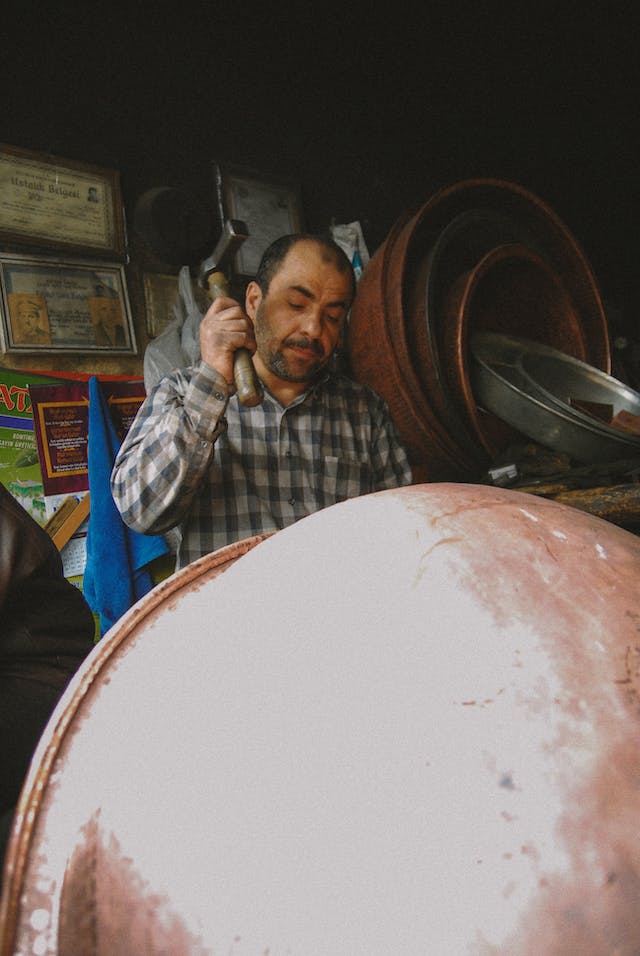How familiar are you with copper forging? The forgings created through this process are corrosion-resistant and applied in numerous industries. Some of the most common applications include commercial valves, plumbing hardware, electrical wiring, refrigeration components, etc.
Copper is the oldest metal ever used by men, dating back to prehistoric times. Old civilizations recognized its significance to humanity and started using it as early as 9000 BC. Nowadays, it is vital for everyday living, as it assists the delivery of clean water and electricity to households.
Here is everything you need to know about this metal and the forging process.
What is it?
Copper forging is a popular forming process during which the form of copper bars is deformed under high pressure to create the desired dimensions and shapes. It optimizes the microstructure of the components made from this material while preserving its mechanical properties. The process is performed under elevated temperatures. Visit this website to learn some useful facts about copper.
The inceptive step involves the design of forging dies, which are created by adhering to the drawing of the desired product. Afterward, the bars are cut to the desired length and heated in a furnace to the required temperature. Once the bars are heated, they are placed under the forging dies and pressed by using high pressure until the required shape is achieved. In this stage, the forged blank is remarkably similar to the final product.
The ultimate step requires removing the flash of the forged blank to create the desired shape. It is important to note that the forging process imposes its own limitations, meaning the alloys might not meet the dimension requirements. In such scenarios, machines can be used after the process is completed to remove excess material and get the required dimensional tolerances.
Types of alloys
There are several types of copper forging alloys for readers to get familiar with, such as bronze, brass, cupronickel, etc. For instance, pure copper forgings offer the best thermal and electrical conductivity in comparison to other metals. Consequently, they have numerous electronic and electrical applications, which classifies them into electrical and non-electrical forgings.
Moreover, brass is a term that describes copper-zinc alloys created by combining the properties of both materials. These properties include ductility, strength, color, hardness, conductivity, resistance to corrosion, etc. In contrast, bronze stands for copper-tin alloys, although sometimes tin is replaced with lead.
Bronze is a widely used alloy because of numerous factors, such as chemical stability, resistance to abrasion, remarkable plasticity, resistance to corrosion, and low melting point. Conversely, cupronickel is an alloy created in combination with nickel. It is strong enough to be used in marine engineering, hardware production, coinage, etc. The following link, https://en.wikipedia.org/wiki/Cupronickel, explains the history, fabrication, properties, and applications of cupronickel.
Properties
Copper offers various properties, such as mechanical, chemical, and physical. The mechanical properties describe this metal in view of ductility, strength, and hardness. Regarding ductility, this material is easy to fabricate and join. Also, it is a tough metal that becomes even stronger by alloying. Its alloys are not likely to shatter when exposed to below-zero temperatures. Nevertheless, alloying results in a drop in electrical conductivity.
The chemical properties of this metal describe its corrosion resistance. All metals and alloys have a reaction to a humid atmosphere by corroding. Nevertheless, in the case of copper, the corrosion process is incredibly slow. The resistance to corrosion results from the formation of stable compounds, such as oxides and basic salts.
As far as its physical properties are concerned, copper is touted to be an excellent electrical and thermal conductor. The fascinating electrical conductivity of this metal has made it essential in the production of electrical wiring. Also, it’s a remarkable heat conductor whose thermal conductivity is thirty times better than stainless steel and 1.5 times stronger than aluminum.
The thermal conductivity of this material makes it ideal for applications that require a rapid transfer of heat like AC heat exchangers, computer heat sinks, vehicle radiators, etc. There are various custom copper forging suppliers providing reliable forged parts. This metal is easy to alloy, which is great news for the plumbing industry and power distribution systems.
Uses
Copper and its alloys are extensively used because of the above-mentioned properties. Its thermal and electrical conductivity contribute to the use in electrical equipment like connectors, engines, and wiring. A mentioned before, this element is used in industrial machinery and plumbing. The antibacterial properties of Cu and its alloys are useful in hospitals, food preparation, plumbing systems, etc. Copper pipes are safe for the transportation of natural gas, hot and cold water.
A final note
Many products are manufactured with the help of copper alloys.
We should not take this metal for granted as humanity has benefited from it since prehistoric times!
